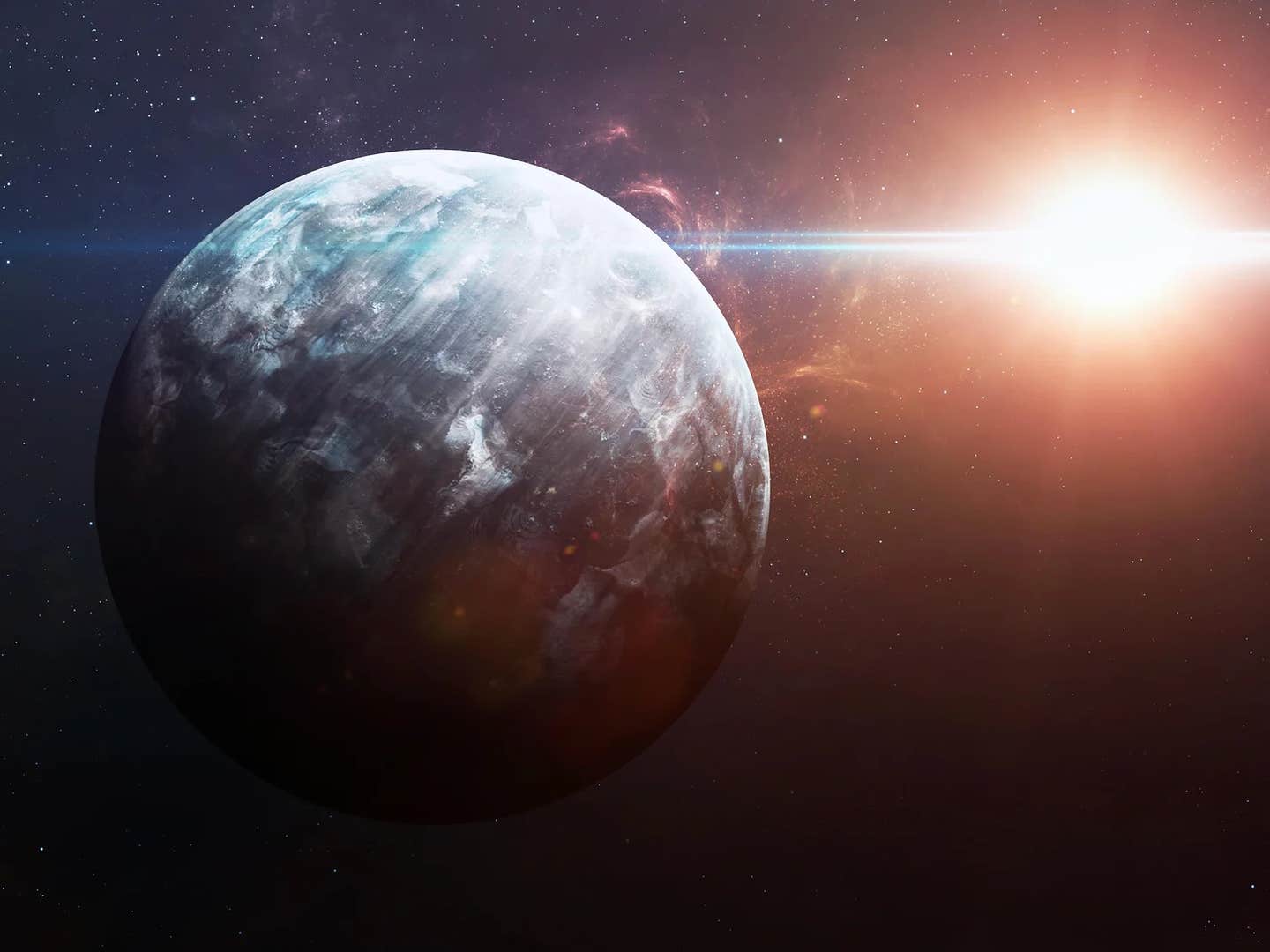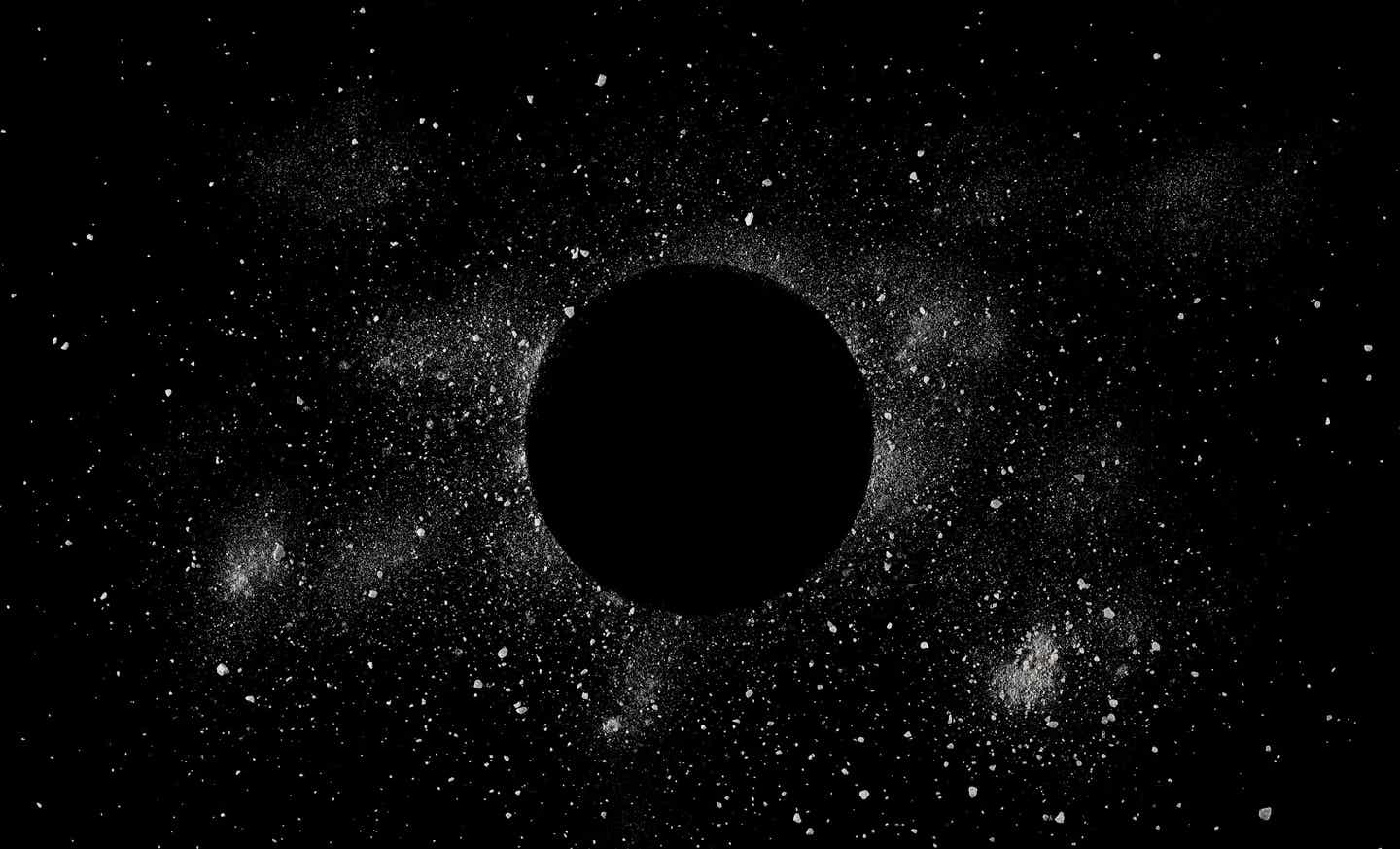A giant undiscovered planet could be hiding in our solar system
One of the most intriguing mysteries in modern astronomy is the possibility of an undiscovered planet lurking in the Solar System

Artist’s concept of a hypothetical planet orbiting far from the Sun. (CREDIT: Caltech/R. Hurt (IPAC)
The Solar System is a dynamic environment, filled with a vast number of celestial bodies, all in constant motion. From planets and moons to comets and asteroids, the diversity of objects orbiting the Sun is remarkable.
Each year, new discoveries further enrich our understanding of this complex system, often uncovering small asteroids or swift comets that add to the tapestry of our Solar System.
One of the most intriguing mysteries in modern astronomy is the possibility of an undiscovered planet lurking in the far reaches of the Solar System, beyond Neptune.
Often referred to as "Planet X," this hypothetical world has captured the imagination of scientists and space enthusiasts alike for years. While no direct observations of this planet have been made, recent research has provided compelling evidence that suggests it may indeed exist.
The idea of Planet X originated from unusual observations in the Kuiper Belt, a region beyond Neptune filled with small icy bodies.
In the early 2000s, researchers noticed that several objects in this region had orbits that were highly elliptical and inclined relative to the plane of the Solar System. Such unusual orbits hinted at the presence of a massive object exerting gravitational influence on these Kuiper Belt Objects (KBOs), leading to the hypothesis of a distant, undiscovered planet.
Various theoretical models have since been proposed to explain the existence of Planet X. Some suggest it could be a gas giant similar to Jupiter or Saturn, but much farther from the Sun.
Related Stories
Origins of Life? Scientists create RNA molecule that follows Darwinian evolution
Others speculate it might be a smaller, rocky planet with a highly elongated orbit. There’s even the possibility that Planet X could be a black hole or a brown dwarf—a type of failed star too small to sustain nuclear fusion.
Despite these intriguing possibilities, Planet X has remained elusive. No direct observations have confirmed its existence, but several lines of indirect evidence have emerged.
One key piece of evidence comes from the clustering of KBOs with highly elliptical orbits. In 2016, astronomers Chad Trujillo and Scott Sheppard found that several KBOs had orbits aligned in a way that was statistically unlikely to occur by chance.
They proposed that this clustering could be the result of a massive, distant object’s gravitational pull—an object they called "Planet Nine." Based on their calculations, Planet Nine would be about ten times the mass of Earth and orbit about 20 times farther from the Sun than Neptune.
Further supporting evidence comes from the orbits of other distant objects, including some asteroids and the dwarf planet Sedna. In a 2019 study, researchers Ann-Marie Madigan and Alexander Zderic used computer simulations to model these orbits.
Their findings suggested that the gravitational influence of a massive object beyond Neptune could explain the observed orbital patterns. According to their simulations, this object would be five to ten times the mass of Earth, with a highly elongated and inclined orbit relative to the Solar System's plane.
Over the years, there have been claims of direct observations of Planet X, but none have been substantiated. Some of these claims were based on anomalies in the orbits of comets or the brightness of distant objects. However, these anomalies often have alternative explanations, such as gravitational interactions with other objects or variations in the brightness of stars.
The potential discovery of Planet X would have significant implications for our understanding of the Solar System and the universe as a whole. It could provide further evidence for the existence of planets beyond our Solar System, known as exoplanets, which have already revolutionized our understanding of the universe and the potential for life beyond Earth. Discovering another planet within our own Solar System would open new avenues for research and exploration.
Additionally, the existence of Planet X would challenge current models of how the Solar System formed and evolved. The prevailing theory suggests that gas and dust in the solar nebula gradually coalesced into planets as they orbited the young Sun.
However, a massive, distant planet like Planet X would imply a more complex formation process. It’s possible that Planet X formed in a different region of the solar nebula and was later ejected by gravitational interactions with other planets or massive objects.
The discovery of Planet X could also provide insights into the history of the Solar System. Its gravitational interactions with other planets or objects might have significantly influenced the distribution of material in the early Solar System and could even have played a role in the extinction of the dinosaurs.
If Planet X turns out to be a brown dwarf or a black hole, its discovery could also have profound implications for our understanding of dark matter, which is believed to constitute a significant portion of the universe's mass but has yet to be directly observed.
Despite the compelling theoretical and observational evidence, the search for Planet X has proven to be extremely challenging. One of the main difficulties lies in the planet's presumed distance and highly elongated orbit, making it difficult to observe directly. Additionally, the planet is likely to be very faint and could be obscured by the Sun’s glare.
Astronomers have employed various techniques in their search for Planet X. One method involves looking for anomalies in the orbits of known objects in the outer Solar System, such as the clustering of KBOs observed by Trujillo and Sheppard.
Large telescopes, like the Subaru Telescope in Hawaii and the Dark Energy Survey in Chile, are also being used to search for faint objects in the outer Solar System. Some researchers have even suggested using gravitational lensing—when the gravity of a massive object bends the light from a more distant object—as a way to indirectly detect the planet.
Despite these efforts, Planet X remains undiscovered. Some researchers speculate that the planet might not exist after all, suggesting that the observed anomalies could be explained by other factors, such as the gravitational influence of known planets or the Kuiper Belt itself. Others believe that Planet X may be too faint or distant to be detected with current technology, requiring more powerful telescopes or novel detection methods.
The search for Planet X continues to be one of the most intriguing quests in modern astronomy. Whether or not this elusive planet is ever found, the effort to discover it has already deepened our understanding of the outer Solar System and the complex processes that govern the formation and evolution of planetary systems.
The potential discovery of Planet X could reshape our understanding of the cosmos and inspire a new era of exploration and discovery.
Note: Materials provided above by The Brighter Side of News. Content may be edited for style and length.
Like these kind of feel good stories? Get The Brighter Side of News' newsletter.



